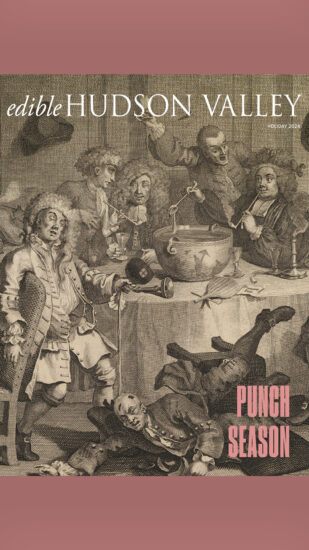A Q/A with Russell Moss, GM of Milea Estate Vineyard
Any day can be Rosé Day if you want it to be. But technically, Rosé Day is June 8th, and Milea Estate Vineyard would love it if you visited their beautiful historical location in the Hudson Valley for a day full of wine tasting, food, and games.
Milea Estate Vineyard will also mark this most special of occasions by introducing their latest rosé, a signature blend called Queen of the Meadow, which guests can enjoy while grooving to a live band and a DJ, while sampling a special menu prepared by Executive Chef David Kim. We talked to General Manager Russell Moss about what guests can expect.
Question: How long has Milea Estate Vineyard been doing its Rosé Day celebrations?
A: We started it last year. I came on to run Milea, early in ‘21, ‘22, and I rebranded our rosé and then launched this event as part of that rebrand. It went beyond our expectations: we were completely sold out. We have a walking tasting up in our clubhouse, which is an exclusive space for our wine club and for private events. We also have a DJ and a shop where people can buy wine and so on. And then they come down to our Farmhouse, which is what we call our tasting room. That’s where we have lawn games, a band, another outdoor bar, and kind of a pop-up shop.
Q: What lawn games are we talking about?
A: Jenga and giant Connect four, and what’s the thing called with the beanbags?
Q: Cornhole?
A: Yeah. That’s our stuff.
Q: Now, I know you’re launching a new wine at the event, called Queen of the Meadow. That’s very exciting. What do you want people to know first and foremost about Queen of the Meadow?
A: Queen of the Meadow is what we’re calling our rosé, by far our largest selling wine and the first wine we put into distribution. You can find it all around the Hudson Valley at restaurants and retailers.
It’s called Queen of the Meadow because of the label, which is screen printed in Hudson Valley and depicts wildflowers that grow on our property. We did that as an homage to our sustainability ethos: we are a certified sustainable vineyard. And one thing that we are cognizant of is the need for pollinators. So, grapevines aren’t pollinated by bees: grapevines are self-pollinated. But farming can impact pollination, and that’s pretty big for us considering colony collapse disorder. To address that, we have a lot of wildflowers on our property, so, as much as we can, we are preserving the wildflowers—especially around our wetlands, and we have quite a few wetlands. One of the flowers in the wetlands is called Queen of the Meadow.
Q: What type of flower is it?
A: It’s a pretty, pinky purplish flower. It’s analogous to the grapevine in that the Queen of the Meadow is originally from Europe but came over to North America, pre-colonization. It really established itself here in North America, so it’s not considered invasive. It’s just non-native.
Q: Can you tell me a little bit more about the process of making it? What were you looking for?
A: It’s a super involved process. The Queen of the Meadow is a blend of four grape varieties, with Merlot and Cabernet Franc making up 50% of it. The other 50% comes from two very rare varieties, Vidal Blanc and Chambourcin.
Q: What do you hope your guests will feel when they first taste Queen of the Meadow?
A: I think one thing that’s interesting is the floral bottle, and then, when you actually smell the wine, it’s kind of reminiscent of flowers. And a lot of that is coming from the Vidal Blanc and Chambourcin.
I think you’re immediately transported to a Hudson Valley wildflower meadow in the spring, in the early morning when it’s the golden hour or in the afternoon when the flower aromas are really powerful. And then beyond the floral aspects, it comes off with these really beautiful aromas of orange peel and strawberry, followed by a dry, crisp finish. For a lot of people, it’s an emblematic rosé for Hudson Valley summers.



